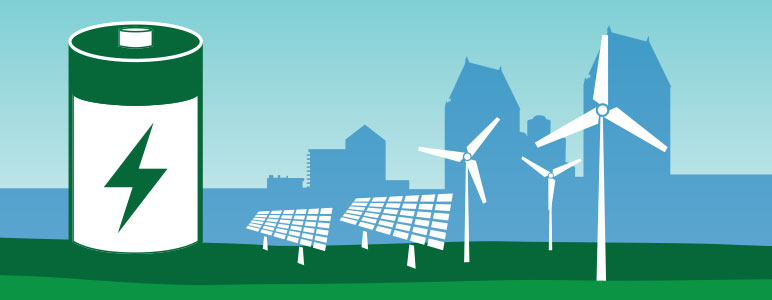


As California continues procuring more energy from solar photovoltaic (PV) systems, energy storage is increasingly seen as a critical element to help achieve the reality of sourcing 33% of the state’s energy and beyond from renewables. It’s a technology that is now scaled to meet the needs of medium and small businesses and provides several significant benefits.
Nationwide, storage is the energy industry’s current hot topic. In July, I attended the Intersolar North America conference in San Francisco where 18,000 attendees gathered to learn about the latest developments in the solar industry, with an increasing focus on energy storage technologies, policies and case studies.
In essence, energy storage captures excess production for later use during periods of peak demand or when renewable sources, like solar and wind, may not be able to produce. As the amount of solar generation grows, energy storage will serve as a flexible resource that can adapt to changing load curves, on a minute-by-minute basis, thus providing reliable power, ensuring grid stability and increasing the value proposition of solar and other intermittent renewables. Certainly, energy storage and renewable energy have a synergistic relationship that must be realized.
California is charging ahead in energy storage development with recent legislation and regulations clearing the way and, most importantly, an extended incentive program with funds to support it.
Set for success
This past summer Governor Jerry Brown authorized extension of the Self-Generation Incentive Program through 2020 with $83 million a year for behind-the-meter generation technologies, including standalone and PV-paired energy storage systems. In addition, the California Public Utilities Commission ruled that energy storage systems paired with net energy metering-eligible technologies, such as solar, are exempt from interconnection application fees, supplemental review fees and standby charges, which were restraining energy storage growth.
Thanks in large part to the success of the California Solar Initiative, state energy consumers have embraced solar, adding some 140,000 PV systems to the grid through the program, amounting to more than 1,500 megawatts of electricity. The state’s solar industry is strong and growing, and the energy storage market is set to follow the same path.
Energy storage is the mechanism needed to allow California to fully maximize the benefits of future renewable generation, reduce fossil fuel use and greenhouse gas emissions and eliminate inefficient ramping up and down of existing power plants. As this unfolds, California is again poised to play a leading role in shaping the renewable energy future, as it did with solar, and to serve as a model for other states seeking energy independence.
Businesses and government agencies that want to better manage their energy use and more effectively integrate solar and other renewable sources should investigate the many advantages of energy storage.
Resources
Self-generation for your business
Self-Generation Incentive Program technologies
Energy Storage Association

